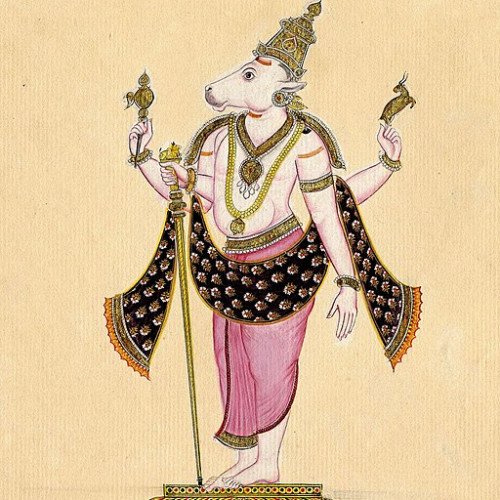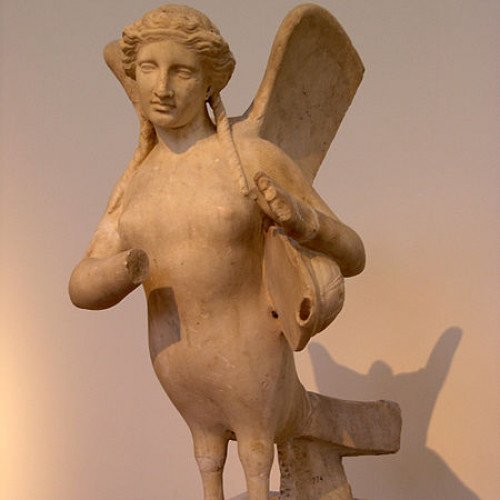Nandi (mythology) VS Siren (mythology)

Nandi (mythology)
Nandi (Sanskrit: नन्दि, Tamil: நந்தி, Kannada: ನಂದಿ, Telugu: న౦ది, Odia: ନନ୍ଦି) is the gate-guardian deity of Kailasa, the abode of Lord Shiva. He is usually depicted as a bull . The decorated bull gangi reddu is the tradition of ancient south india. During the festival of pongal the bull is decorated and performs of stunning ‘feats’. “An ox can dance to the tune of its master’s nadaswara, it can nod at his command or shake its head to indicate no, kneel down and prostrate or bow when asked to. You can often see a Gangireddu stand on its master’s chest and bow in complete humility, appreciating a patron who has bestowed money or food on them. The ‘Dance with the Bulls’ series showcases the feats they perform,”.The tradition of Gangireddu is associated with saivism and grama devata or para sakti honored as universal energy field and attributes. Nandi is a Dravidian root word (kui) which was taken to prakrit and sanskrit and translates to happiness or joy. According to Saivite siddhantic tradition, he is considered as the chief guru of eight disciples of Nandinatha Sampradaya, namely, Sanaka, Sanatana, Sanandana, Sanatkumara, Tirumular, Vyagrapada, Patanjali, and Sivayoga Muni, who were sent in eight different directions, to spread the wisdom.The Cham Hindus of Vietnam believes that when they die, the Nandi will come and take their soul to the holy land of India from Vietnam.
Statistics for this Xoptio

Siren (mythology)
In Greek mythology, the Sirens (Greek singular: Σειρήν, Seirḗn; Greek plural: Σειρῆνες, Seirênes) were dangerous creatures, who lured nearby sailors with their enchanting music and singing voices to shipwreck on the rocky coast of their island. Roman poets placed them on some small islands called Sirenum scopuli. In some later, rationalized traditions, the literal geography of the "flowery" island of Anthemoessa, or Anthemusa, is fixed: sometimes on Cape Pelorum and at others in the islands known as the Sirenuse, near Paestum, or in Capreae. All such locations were surrounded by cliffs and rocks. According to the Greek Neoplatonist philosopher Proclus, Plato said there were three kinds of Sirens: the celestial, the generative, and the purificatory / cathartic. The first were under the government of Zeus, the second under that of Poseidon, and the third of Hades. When the soul is in heaven the Sirens seek, by harmonic motion, to unite it to the divine life of the celestial host; and when in Hades, to conform the soul to eternal infernal regimen; but when on earth their only job to "produce generation, of which the sea is emblematic".